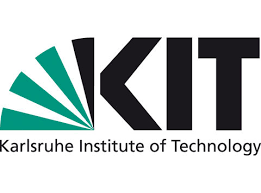Karlsruhe Institute of Technology: Three ERC Consolidator Grants for KIT researchers
In the 2021 award round of the renowned “Consolidator Grants” of the European Research Council, researchers from the Karlsruhe Institute of Technology (KIT) performed very successfully. The materials scientist Christoph Kirchlechner, the physical chemist Lars Heinke and the art historian Inge Hinterwaldner will each receive up to two million euros over the next five years for their projects in the fields of hydrogen embrittlement, ion dynamics and digital art
“The Europe-wide competition for the coveted funding from the European Research Council is tough. Therefore, I am particularly pleased that three KIT researchers can now advance their ambitious and exciting projects in materials research and art with the ERC Consolidator Grants,” says Professor Oliver Kraft, Vice President of KIT for Research.
Resilient metals for the hydrogen economy
In his TRITIME project, Professor Christoph Kirchlechner investigates the fatal effect of hydrogen embrittlement on a future hydrogen economy(“Isolation, observation and quantification of the mechanisms responsible for hydrogen embrittlement by tritium-based micromechanics”). With high-resolution investigation methods that also use the hydrogen isotope tritium, the materials scientist wants to better understand how and why metals change their strength when they come into contact with hydrogen. “With TRITIME, we want to fundamentally understand the mechanisms of hydrogen embrittlement and contribute to the fact that new materials that are used in the distribution and storage of hydrogen can be tailored,” says Kirchlechner, who holds the professorship for nanostructured functional materials at KIT and the institute for Applied Materials – Materials and Interface Mechanics.
Ionic potentials at the nano level
The DYONCON project (“Dynamic ions under nano-encapsulation for porous membranes with ultra-fast control of gas permeation”) by physical chemist Dr. Lars Heinkedeals with urgent questions of materials research – and at the same time reaches beyond. In his ERC-funded project, the private lecturer and working group leader at the Institute for Functional Interfaces of the KIT investigates the dynamic properties of ions – electrically charged atoms or molecules – in porous materials. “In working with ionic liquids and films,” says Heinke, “we want to show that mobile ions in nanometer-sized pores offer unprecedented functionalities.” On the horizon of this new approach are improved electrochemical technologies for energy storage, sensors and signal processing.
New perspective on digital art
In the area of the humanities and social sciences, the KIT can also score points in this year’s award of the ERC Consolidator Grants. In her project COSE (“programmed secrets: artistic interventions in the digital fabric”), Professor Inge Hinterwaldner is dedicated toof online art, i.e. computer-based artistic artifacts that can be tracked down on the Internet. In an interdisciplinary team, Hinterwaldner – who teaches art history at the Institute for Art and Building History at KIT – will combine phenomenological-hermeneutic methods with approaches from media, game and code research, software forensics and visual design. In addition to the aesthetic aspects, technical aspects of digital art such as codes, files and software are in focus. “In the COSE project,” says Hinterwaldner, “we want to shed light on the black box of ‘computer art’ in such a way that the humanities can deal with programmed works more naturally in the future.”

